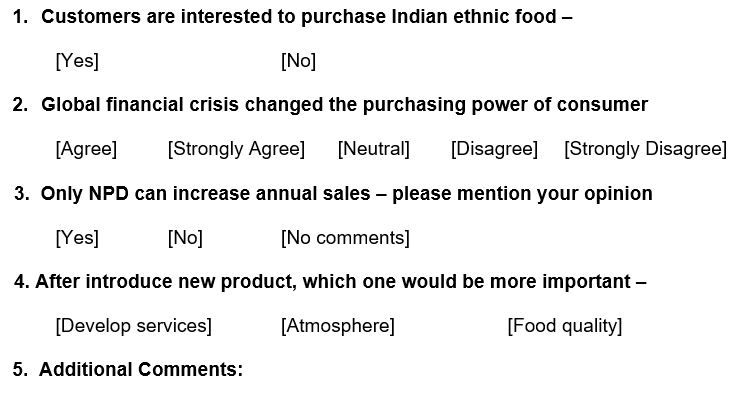Executive Summary
This dissertation aimed to investigate the topic “what are the implications of the new product development on consumer buying behaviour in Indian ethnic food in the UK?” The literature review of this dissertation concern with theoretical aspects of new product development (NPD), stages of the NDP, consumer buying behaviour, NPD implications on consumer buying behaviour, and the products of Indian ethnic food. On the other hand, the main objective of methodology chapter is to illustrate how the preferred research methodology will go with the foremost goal of the dissertation inquiry and how it will complete throughout the present study. However, the research of this paper will prepare a questionnaire to find out the problems and implications of NPD on customer in Indian food in the UK. This dissertation also focuses on the major marketing tools and strategies of successful Indian ethnic food restaurant in the UK. The final chapter of this dissertation will provide some recommendation for the Indian restaurants to take different marketing actions to aware the customers about potential new products.
Introduction
Background of Study
According to the report of Mintel (2007), Indian ethnic foods (including the Indian, Bengali, and Pakistani traditional food) experienced rapid growth in the UK aggregate food market and it has a high level of penetration as a popular meal option. Mintel further added that the approximate value of the Indian food market stood at £493.8 million in 2006 though the ethnic restaurants is facing a number of challenges due to the adverse impact of global financial crisis. On the other hand, the UK ethnic foods market is the biggest ethnic foods market in Europe as this sector has been gradually improving during the last two decades. At the same time, the UK customers are increasingly aware of the link between the food they consume and their health, so they are seeking natural nutritious products, for example, Indian ethnic foods.
Among a number of ethnic food items, Hyderabadi Biryani, Indian Breads (like roomali roti, naan, aloo paratha, Tandoori and Balti), Chicken Curry With Coconut, desserts (gulab jamun or kulfi), Snacks like samosa, aloo tikki, fried rice, chilli chicken, Kofta Curry are most popular to the UK customer. From its beginning, these ethnic food items have achieved customer’s appreciation in a greater extent with the birth of various giant players in this restaurant segment. In this context, new product development will increase the volume of sales, as consumer buying behaviour has been changing day-by-day.
Research questions and Objectives of the study
This dissertation aimed to investigate, what are the implications of the new product development on consumer buying behaviour in Indian ethnic food in the UK?
To highly concentrate on the aim, the dissertation has argued to respond to the following research questions, the answer to this question would enable the Indian ethnic food to organise their strategy a towards a greater motivation of customers behaviour for increased confidence among the consumers in the UK Market. Three research objectives are listed below:
- What are the steps to developing new product?
- Which factors mostly influence the customer’s behaviour?
- Which strategies the Indian ethnic food companies follow to developing new products in the UK Market?
- To what extent new products of Indian foods would be able to bring customers satisfaction in terms of price and profitability.
All of these issues will be measured under positive considerations along with theoretical backdrops and these tasks are significant since all of those issues are closely interrelated with scenario of said Indian ethnic food companies’ performance and their influence on the UK customers buying behaviour.
Rationale of this Study
From last era, many researcher and scholars tried to investigate the question why consumers purchase a new product and how the marketers influence customers purchasing behaviour, the researchers have concentrated either to analysing the customers behaviour or on new product development, but no integrated research agenda has yet raised with implications of new product development on consumer buying behaviour. Keller (2009) pointed out that if the companies focus more on customer behaviour, then they develop new product, they will be able to retain more customers and boost sales revenue. The large number of Indian ethnic food companies in the UK began to utilise new product development as a tool of motivating customer behaviour as way to retain more customers under the recessionary economy. The rationale of this research is to analyze the implications of the new product development on consumer buying behaviour by observing the real scenario of Indian ethnic food in the UK to evaluate to what extent NPD1 is effective to motivate and retain customer and increase profits. Moreover, Indian ethnic food in the UK is trying to escalate their overall profits by increasing their customer retention rates within the downturn economy, this dissertation will assist them to remain competitive by potentially making their consumers feel as though they are getting a better level of customer satisfaction, which will provide the companies a practical advantage in the market.
Limitations of the project
The author of this thesis paper has faced following difficulties in order to complete this paper–
- Unavailability of the secondary data was the main problem to co-ordinate the paper;
- The price of few important reports upon Indian ethnic foods was too high for the researcher as the budget for the research was limited;
- It was difficult to conduct interview because selection of the respondents was a difficult task for the researcher, unwillingness of the respondents, communication problem and some other problem to deal with the selected audience;
- Complexity in maintaining overall co-ordination and control;
- In addition, tine constraint is also another notable drawback to conduct research and the researcher has to research more on secondary resources to overcome this dilemma.
Scopes of the study
- The researcher has chosen a unique topic, which gives the opportunity to research on various aspects like new product development, customer buying behaviour and the market of Indian ethnic food in the UK;
- As the Indian ethnic food products in the UK is a potential development criterion from both financial and global marketing perspective, conduction of a research upon those aspects would be useful in enhancing some integral capabilities;
- Such capabilities involve escalating the analytical power to locate the global and Indian changes in customer behaviour, strategic, corporate, branding, multifunctional, cross-cultural, and marketing implications, and industrial structure under a structured theme of research;
- It has opportunity to discuss the possible fruitful and realistic foreign entry strategy for the development of Indian food market in the UK;
- The researcher would like to fill in the gap of the outcomes of other research documents;
- The respondents attitude regarding Indian ethnic food were positive;
- Most importantly, this paper has enough scope to conduct a real research to know the food habits of the UK customers and change of their attitudes.
Literature Review
Analysis of New product development (NDP)
New product development (NDP) has one of the extensive fields of the product development in the midst of designing, innovative creation as well as marketing and selling of the latest products and services. The NDP discipline has highlighted methodical development techniques in order to conduct entire course of actions to convey latest product or service in the marketplace. As said by the PDMA2, company mission has to flourish employee efficiencies who have involved in both of improvement and management of the latest manufactured goods as well as services. Alternatively, organization mission has also included recent information facilities, which have the quality to turn into the knowledge of utilizable layout to benefit company’s innovative team (TechTarget, 2005).
For example, Indian ethnic food endeavour might be a latest effort oriented of the product offers extra features for the young, adult, and children all over UK as well as attracts with family packages. Successful launch of this service would be boosted sales of the company’s food, but after a few months if public demand for this food product has flattened out the company has needed to arrange additional marketing operation through few significant development of the Indian ethnic food. Moreover, it has identical to note that quoted those expertise employees who have worked for boost up sales of the company has the part of marketing department not of the R&D3. In this case, economical boundaries of the company’s NDP have to conscious on following aspects (Anon, 2007).
- Product and service augmentation: accumulation of modern features to the existing program would be enlarging company’s market target.
- Amendment of core products and services: product redesigning or product outlook along with new features;
- Invention of latest product and service lines: reordering company’s product and service line could be added latest innovation of product and service.
- Reposition: amendment in the market strategies would be offered greater advantages to their clients.
- NDP: finally, NDP would be assisting products and services along with modern attributes.
Stages of the NDP
Since shorter PLC4 and rapid changes of the consumer demand, the NPD could not be long lasting. Inefficient organizations have suffered from a gloomy fate until they have skilled to deliver twisted, rapid as well as economical product and service. As said in a report, 46% company resources have lost through concept generation and improvement in order to launch a modern product or service. Moreover, failure of the NDP has also taken out the scope of re-market entry of the company. For example, (70–85) percentage of the US multinational companies has repaired their NPD stages through discovering CSFs5 in order to launch latest product and service in the marketplace. According to the following figure, the NDP has composed by both of hypothetical and functional outline named by idea generation to commercialization (PDI, 2010).

Success of the company has determined through continuous improvement of the product and service lines. On the other hand, collapse of the company has turned towards sell decline. Fundamental process of the NPD has required accomplishing eight phases as said below (Brassington, 2010, p.1-3).
Phase-1, Idea generation
Scope of generating new ideas for the NPD of an organization has simplified through two ways- internal source and external source. Employees of the firm has considered internal source of idea generation and the external source has included, client’s opinion, competitors, delivery channels like distributors and suppliers.
Phase-2, Idea screening
Operational executives of an organization have constructed ideas, which have economical potentiality to execute as well as develop in near future. Conversely, non-feasible ideas of the NDP has not cost effective for the organization.
Phase-3, Concept improvement, and analysis
In the third phase, concept improvement and analysis has discovered to justify several dynamics like, assessment of the target client’s need fulfilment, consumer response about the idea, scope of execution in practice, company benefits and so on. It has to be note that, previous two phases has not executed as a working model of this phase.

Phase-4, Marketing strategies and improvement
As directed in the marketing mix strategies of the product and service such as consumer market segmentation, selection of target market, branding, and positioning approaches of the product and service have generated expected profits in this phase.
Phase-5, Business analysis
Business analysis phase has examined comparatively broader way of the feasibility of marketing strategies than the previous phases did. This phase has evaluated cash inflows generated by the new product or service sale, cost of production, potentiality of the market share achievement, and probable PLC.
Phase-6, Product improvement
Finally, in this phase probable NDP prototype has generated, where the prototype would go through preferred entire assessments as well as meet the target clients to search for additional amendment if necessary.

Phase-7, Test marketing
The term test marketing has referred to test the new product or service in a particular location. Before launch the new product or service countrywide, it has essential to take care of the marketing mix strategies if the target clients would be wanted to amend new product or service attributes.

Phase-8, Commercialization
Whilst the test-marketing phase has successfully executed, new product or service would be went for countrywide commercialization. Before launch of the new product or service in all over the country, a few dynamics have required to consider such as time arrangement, promotional techniques, and location where to launch.
Alternatively, commercialization of the new product or service has required considering both external views and the internal views. External factors have included marketing segments, evaluation of the consumers and related participants who have worked for unbeaten commercialization of the newly manufactured product or service. Conversely, internal forces have deal with the organizational components, accumulation of the marketable movements. Moreover, employee efficiency required by the overall innovation procedure of the NPD in order to point out underlying consumers needs and demand. Considering all of these aspects commercialization of the NPD has divided into two broader forms. They are- involvement of the consumers in the innovation process and commercialization of the product or service modernization. Consumer contribution of this process has primarily highlighted on the function and structure of the consumers who have involved in the overall NPD. In this case, key clients have obtained priority since they have enough smart to determine fate of the NPD potentialities as well as assign to seek limitations of the new product or service. Alternatively, commercialization of the NPD has compact with the outcomes of the firm’s marketable functions, employee efficiencies, firm’s innovative team management, and focus on the dynamics that have the competency to boost company sale volume, marketing strategy handling and resolve the frontline challenges (Beta, 2010).
Literature on Consumer Buying Behaviour
Consumer behaviour has studied the reasons and ways of purchasing goods and services by the people. In short form, it could be defined as the decision-making steps, which have leaded the dynamics of purchasing products and services or both. Alternatively, it could be affirmed that consumer buying behaviour has experienced ultimate consumption of the products and services. Consumer buying behaviour models have discussed an assemble form of multiple influences of the overall buying decision making procedure. In following diagram, consumer decision-making process has described through the “black-box model” where, consumers have experienced advertising motivations along with the authentic decision for purchasing goods and services. Besides these two forces, the black-box model has also focused unambiguous form of consumer responses as well as transformer.
Key rationales of the model have to suggest the target consumers to repose through the specific modes in favour of diverse stimuli whilst they would prepare themselves to procedure existing stimuli. In broader form, external forces of the model has utilized as stimuli to motivate consumers for a positive decision making process. Besides external forces, at the primary stage client’s individual circumstances and existing stimuli have worked together before generated positive buying behaviour. This model has termed as the “black-box” since it was quite difficult to appraise human mind motions. Moreover, prediction about human mind both at present and in future is completely impossible. However, with the progress of the positive buying behaviour it has easy to focus on the internal motivations of a human being along with the positive decision making steps of a consumer. Additionally, it would not be feasible to discover through the entire data by which a consumer would be transformed in conjunction with producing positive buying behaviour via stimuli. For more details, black box of the consumer buying behaviour has plotted below. (Kotler et al. 2004, p.42–244)
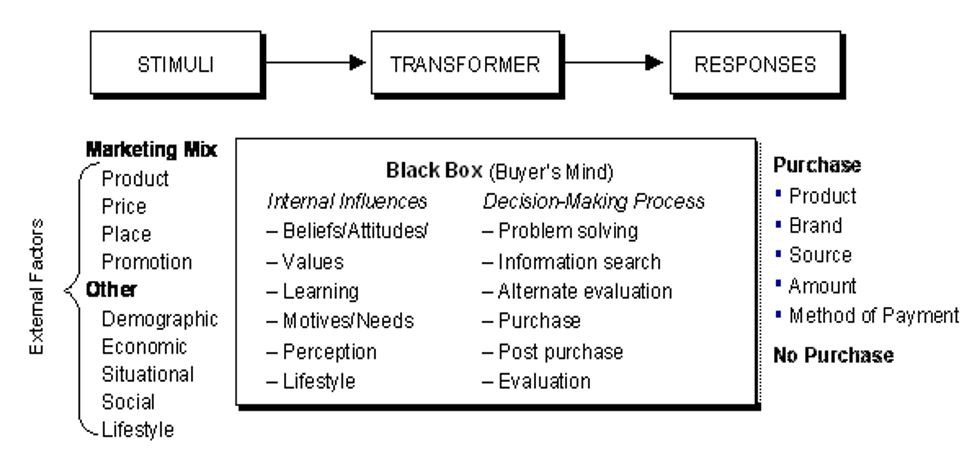
Customer Decision-Making Process
Usually, consumers have followed five phases decision-making procedure during purchasing. Precise form of the purchasing procedure has plotted in the following diagram. This model has not only employed in the consumer decision making during purchasing, but also provide support to the marketers considering overall purchasing procedures more willingly than positive purchasing decision making. Moreover, this model has also capable to influence business selections during proper time. Consumer decision-making model has involved passing the clients during all phases while they have purchased. Conversely, in case of regular buying behaviour, consumer might be skipped few phases. For instance, whenever students wished to buy hamburger, they have directly gone to the buying decision rather than information searching. Significance of the model has assisted to understand consumer purchasing behaviour as well as several considerations. Snapshot of the model has plotted later than the diagram concisely (Engel, Blackwell, & Miniard, 1996)
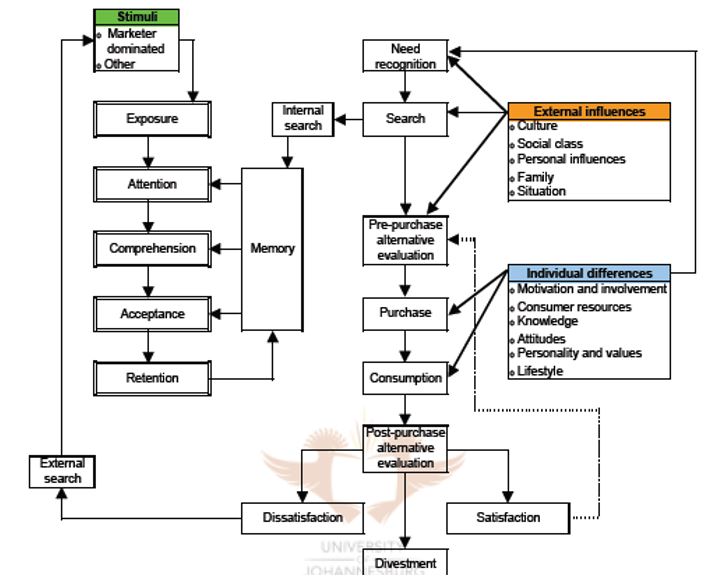
Need recognition or identification
Need recognition has considered as the beginning phase of the model where buyer or the consumers have responded to the marketing stimuli. In favour of the strapping need fulfilment, consumers have required wider range of information through utilization of several information sources.
Information hunt
Typically, four categories of information sources utilized during need recognition.
- Personal or private source: it has included family members, friends, or neighbours.
- Commercial approaches: advertisements, direct selling, retailing, dealers, product packages, product display outlets;
- Public or communal sources: electronic media like newspapers, radio channels, television advertisements, consumer associations, and business specialist’s magazines.
- Experiential or empirical sources: handling, examining or utilization of the product or service
Efficiency of influencing these information sources would be differing in different product, service along with the consumer segments. Several business researches have evaluated that rather than the commercial information sources consumer’s value as well as self-respect turned them to the personal information sources. At this point, task of the marketing squad has required categorising main significant sources, which has great impact on the target markets.
Alternative product or service evaluation
At this time, consumers have needed to decide required product, service, or brand among several alternative sources. Significant indicator degree of alternative evaluation has displayed consumer emotion during product involvement. Attachment with the product or service has gone through perceived relevance scale along with the personal value those have accompanied positive product choice of the consumers. There have two significant determinants of evaluations of the alternatives pointed as below.
High involvement of product purchasing
A widespread evaluation has taken place in the high involvement where relevant forces have included elevated spending and personal risk such as house and car buying, large amount of investment.
Low involvement of product purchasing
Very simple evaluation procedure has required here. Soft drinks, corn flecks, or other breakfast cereals could be easily chosen from supermarket.
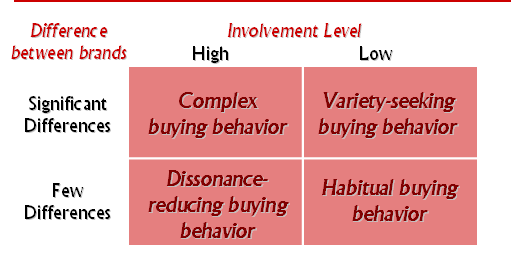
Positive purchasing decision has laid or relies on the information nature through which marketing teams could be arranged several purchasing circumstances to their target clients. High involvements of the consumers have indicated availability of the required information that has tended towards the positive purchasing decision. Consequently, sales department of the firm has greater competitive advantages rather than stress handling of the product attributes. Alternatively, secure sale of product or service has not need to face trial or sampling stages.
Purchase decision
Positive purchase decision has accessed through choose purchase alternatives that has included product or service, pricing, package, availability and purchasing methods.
Post purchase assessment
Post purchase assessment has evaluated degree of consumer satisfaction after consuming the product or service. This evaluation has also denoted as the cognitive dissonance. For more detail, consumer satisfaction degree has described below.
Degree of consumer satisfaction
Degree of the consumer satisfaction has mostly evaluated by utilizing following equation.

Whilst perceive delivery or supply of the product or service quality has lower than expectation the consumer has said dissatisfied. Conversely, whenever perceive delivery or supply of the product or service has become equivalent, consumer has stated satisfied. Additionally, tremendous supply of the consumer demand has made the clients either delighted or overwhelmed. All of these discussions about the trade-off between consumer and perceived product deliver have plotted in the following table through a simple equation (Lingham, 2009, p.10)

Implications of the NPD on consumer buying behaviour
In case of new product development IPD6 practices on consumers have the best way of implications. Conversely, core competitive success has entailed by the key forces like time to market entry. More specifically, enhance integration of processes of product designing, strategic mission, vision and objectives, organizational proficiency development and finally, construct an efficient framework of the technology design and implementation. Traditionally, implications of the NDP on consumer purchasing behaviour have studied more reasonable divisions of the work hubs. Hence, individual consumer behaviour study has boosted operational segments of every unit of NPD. As a result, company’s cost of production has drastically reduced and proportionally increased productivity. Function of IPD has featured with following three dimensions (Crow, 1996).
- Firstly, attachment of the positive decision making process with strategic integration as well as the fashion of firm’s operational areas has directed the organization to diverse its own personality from marketplace.
- Second, efficient increase of organization’s production volume has executed by assembling strategic integration and the consumer decision-making behaviour. Moreover, firm’s operational function direction has also focused broadly.
- Third, supply chain management integration or the logistic has extended integration prototypes ahead of the producer’s along with its target consumers and suppliers.
Due to a significant influence has delivered by the NPD process on market competency of a firm, often it has greater complicated to integrate superior functions of the NPD especially integrating consumers and suppliers of the firm. Adoption of advanced technology as well as firm’s flexibility increase has commonly relies on NPD designing along with smaller lead-time establishment. Moreover, faster transformation of advance technologies and the consumer demand has stimulated firm’s flexibility. Core objectives of the IPD have covered following areas.
- Consumer needs, demand, and expected qualities would be meeting through superior NPD design.
- Competitive pricing strategies have to be considered during designing of the NDP in terms process efficiencies and production volume and quality.
- Circular flow of the NPD design would be effective if it has carried modest lead-time or market entry time.
- Minimization of inefficient NPD design transformation as well as producible design has enlarged productivity.
Execution of the above objectives has needed to integrate a trade-off between NPD and NPD process design reflect on the firm’s core business strategies. Integrated approaches of the NPD process design has grounded on following aspects.
- Business strategies have to rest on the alignment of NPD.
- Organizing NPD integration team management has considered the mode to establishing NPD functions.
- Acknowledged definition of the NPD has optimized NPD procedures.
- Production of a product has composed of an integrated NPD design automation devices through innovation, analysis, utilization of digital product or service data.
- Optimization of the product or service as well as NPD designing has enhance move toward manufacturing, testability, affordability, trustworthiness and managerial efficiencies.
Application of the previously mentioned devices and definitions, a firm has required to modernize, consider the cultural aspects and finally, improved communication functions.
Fundamental NPD implications on consumer buying behaviour
Fundamental NPD implications on consumer buying behaviour have mostly driven through five key dynamics to enter into competitive market. The five dynamics has included cost of production strategies, product flexibility, trustworthiness, and pioneering proficiencies. Superior marketers have to be efficient in all of these five dynamics. For instance, low production costs reflect on boost of NPD production volume increasing as well as automation of the production process. Flexibility of the product has a reflection of simpler, modernize, and standardize skills of the NPD procedures. In addition, enhance, reduce lead-time of the overall manufacturing procedures. In following figure basic NPD implications has illustrated (Crow, 1996).
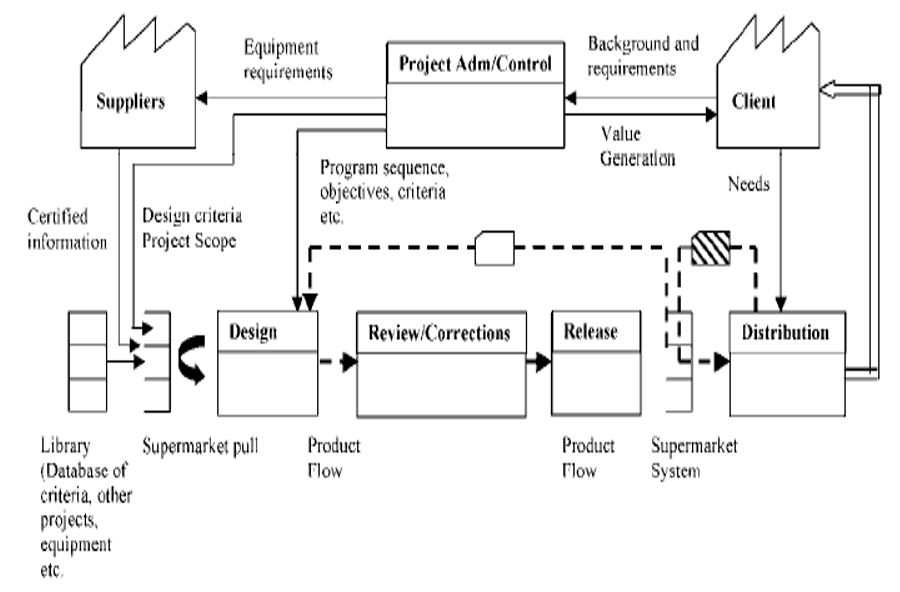
The products of Indian Ethnic Food
Compare to the whole world, India has proficient to make every superior meal, which has suited countless taste buds for the people. At the south region, most of the people has strict vegetarian, but in the northern people have fond of meat and breads rather than rice and has frequently cooked Mughalai style dishes that have presented a strong affection with the Middle East along with the central Asian region. It has quoted that, the cow has the symbol of holiness as a result beef dishes have severely taboo for the Hindu people lived in India. According to the report of Mintel (2007), pork is similarly taboo for the Muslim community as beef for the Hindu. Additionally, the cookers of Indian ethnic food restaurants in the UK have concentrate more on spices, oil, and fat rather than curry heat. Southern people of India have preferred rice with curries since they have a tendency to be hotter. Moreover, Indian has eaten by hand as a part of their culture and has not used to use fork and spoons (Khana, 2010).
However, Mintel (2007) reported that Indian ethnic foods in the UK indicate Indian prepared foods, Indian flavoured crisps and snacks, cooking sauces, pastes Indian spices, and all food of South Asian origin, especially Pakistani and Bangladeshi traditional food.
Ethnically Sensitive Food in India
Across the India, 28 states has consumed varieties of food and this culture has reflected loads of enrich history, climatic disparity, economic structure as well as cultural divergences. Not all of these dynamics has equally imperative, but every state has represented variation in lifestyle which has a symbol of strong ethnic culture as well as food habit. A famous Dutch economist Mooij has stated that product and service ownership and utilization would be assessed via a country’s culture by 70%. At this point, food habits as well as preferences have stood more apparently. For example, Maggi of the Nestlé brand has renowned for soups and sauces. However, in the India, Maggi has well known for instant noodles. In the East Asian region, there have a little semblance of the product selling and Nestlé has sold spicy flavoured noodles containing both local regional tastes over 25 years in India. On the other hand, Kellogg India has usually offered massive breakfast cereal including, uncooked breakfasts, cornflakes containing ethnic flavours like mango, saffron, honey, banana though most of the Indian has preferred hot meals. The Kellogg has assessed that their success in India has a matter of long time, but their several products have gained positive local responses. Additionally, it could be stated that food has the symbol of culturally sensitive dynamic (Wharton, 2009).
Research Methodology
Introduction
The prime objective of this chapter is to illustrate how the preferred research methodology will go with the foremost goal of the dissertation inquiry and how it will complete throughout the present study. However, the author of this dissertation will formulate the paper in accordance with Malhotra’s six major steps for marketing research approach rather than Yin’s case study approach. It should point out that the researcher had the opportunity to adopt case study approach as Stake and Yin (2002, p.5-6) stated that this approach is not applicable when related research questions start with “what” or “How”. The research questions supported Yin’s approach, but it would be easier for the researcher to go with Malhotra’s approach, as the researcher has to research on overall the implications of NPD on customer attitude in Indian ethnic food in the UK.
To construct the paper, the researcher would design a questionnaire bearing in mind the topic and a research problem, collect primary data from the target interviewees, remove all mistakes from survey reports, and demonstrate the results with conclusion and recommendation.
Research Approach
According to the view of Malhotra (2009) and Saunders, Thornhill & Lewis (2006), there are mainly two research approaches, for instance, qualitative and quantitative. In order to formulate this paper, the researcher will adopt both approaches to find out the problems, but the researcher will concentrate more on qualitative approach. Furthermore, quantitative approaches have equal significance though the implications of the NPD on consumer buying behaviour are not a numeric concept to test. However, the researcher designs the third parts of questionnaire to get descriptive answer. Therefore, the researcher will apply several techniques to gather primary data for evaluation of customer buying behaviour in Indian ethnic food in the UK.
Primary research
According to the view of Marshall & Rossman (1999), primary data have to generate for the definite reason or resolve the research problems. As a result, the author of this dissertation would consider this type of data to observe the actual position of Indian food to the UK customers and to suggest the prospect of NPD in this environment. In this case, the researcher would consider five Indian restaurants for data collection where national and international customers were available to interview. However, the following chart demonstrates more information about the primary research –
Table 1: – Selected Respondents for interview. Source: Self generated
Selection of Interview process
According to the view of Malhotra (2009) and Yin (2003), the most prominent approach of primary data collection process is face-to-face interview. As a result, the author of this research paper managed sufficient time to gather primary data by applying the method of face-to-face interview. It has already mentioned that the researcher selected 50 employees and 50 customers of Indian ethnic restaurant to interview to know about the prospect of NPD to the customers in the UK market. However, the researcher has chosen London based Indian restaurants due to conduct direct interview by avoiding harassment to visit different place. On the other hand, the researcher applied other instantaneous methods to conduct primary research, for instance, traditional telephone, and e-mail played vital role while the executives were unreachable for direct interview.
Data Analysis process
At this phase, the researcher of this dissertation would recheck all the data to remove the incompatible and fabricated information about the implications of NPD on consumer buying behaviour. Here, it is important to state that the researcher would refine primary data by considering secondary data related with the implications of NPD on customer in Indian foods. However, the researcher would compare and contrast the primary and secondary data regarding the impact of NPD in the UK food market or customer buying behaviour by presenting graphical charts and using other explanatory techniques.
Secondary data
As there is huge information available in the issue of new product development and customer buying behaviour, the researcher of this dissertation would organise the literature review and discussion chapters by using secondary data sources. Sekaran (2006) and Skinner & Ivancevich (2003) stated that the assortment of secondary sources are the published works of renowned authors, for instance, magazines, books, journals and previously execute research. Malhotra (2009, p.107) and Zikmund (2006) stated that using of secondary sources has numerous advantages as the information of these sources are more authentic and based on significant research. At the same time, these are processed data for serving the present function. Moreover, customer buying behaviour is one of the most sensitive matters in global economic downturns, so it would be easy for the author to collect such information from Mintel reports.
However, the researcher of this dissertation has decided to use the information from published mintel reports, related research papers on the NPD on customer attitude, emerald journal articles, Indian ethnic food reports, and other online sources.
Questionnaire Design
Malhotra (2009, p.281) stated that questionnaire is one of the most important parts of the dissertation and it is an art not science, so the researcher of this thesis paper gave highest effort on the questionnaire. Malthotra further added that broad discussion with target interviewees might bring unjust outcomes with different observation and opinion whereas specific questions help the respondents to discuss with a particular issue. Here, it is important to mention that the researcher emphasized more on questionnaire because key recommendations, conclusion, and the findings of the research developed from the feedback of the interviewees. In order to design the questionnaire, the author would like to put simple questions with uncomplicated contents in three sections. However, the following table demonstrates the questionnaire design process for this paper –
Table 2: – The questionnaire design process. Source: – Self generated.
Limitation of Data Collection Procedure
Unavailability of secondary data, unreliable resources, irrelevant information, and high price of the academic report were the main problems to gather information of the dissertation. On the other hand, short deadline to complete the paper induced the researcher to collect primary data from limited area of entire the UK food market.
Findings and Results
Section A: (About the respondents)
Question 1: Your name
The purpose of this question is to introduce with the target customers and employees.
Question 2: Grouping respondents by gender
Among 50 customers, 62% customers were male and 38% customers were female. On the other hand, 90% of the target employees were male in the Indian ethnic food restaurants.
Question 3: grouping respondents by age group
The researcher has planned this question of section A to find out the percentage of participants according to their age. The survey report demonstrates that 8% customers were in the 30 – 45 age group and 10% customers were between 45 and 55 the range, and only 6% customers were above 55 whereas only 46% customers were 18- 25 year old and 30% customers were 26- 35 year old.
However, it was a common question to scrutinize the trends of the customer and the significance of this age group composition is that middle age and teenager like to taste Indian ethnic foods.
Question 4: Grouping respondents by profession
As the price of Indian ethnic food is reasonable for the UK customers, it becomes a formal question, but it also helps the researcher to identify trends of the customers and employees. However, most of the employees and customers were either students or service holders.
Section B: (design to know customer’s view)
Question 1: Do you taste Indian food again
The researcher has asked this question in order to know the attitude of customers about Indian ethnic foods. However, the researcher got positive reply from the customers as more than 60% customers have previous experience to taste Indian ethnic food items.

Result: After analysing customer behaviour, it can say that Indian food market has potential opportunities in the UK food market.
Question 2: Indian food is tasty and spicy – to what extent do you agree
The researcher also designed this question to know customers point of view. Here, it is interesting that 20% of total customers selected strongly agreed option, 50% chosen agree that Indian food is really delicious, 15% customers just disagreed with the statement, and 10% customers strongly disagreed, and only 5% customers were neutral.
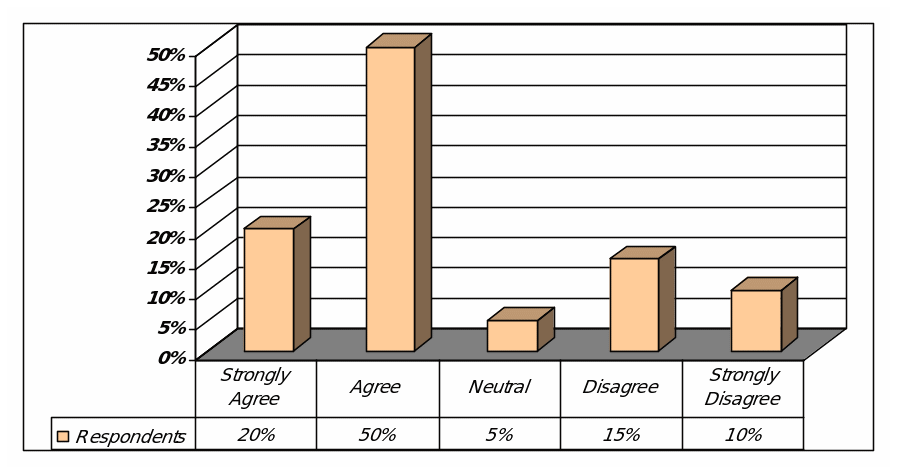
Result: from survey report, it can say that most of the customers like Indian foods because of its taste, which help the companies to develop new food items.
Question 3: Indian food is good for health
It was an important question because according to the report of Mintel (2007), it has become one of the major aspects of this decade, and its effects on the Indian food industry has been impressive, rapid changing and influential. However, the survey report shows that 70% of total customers said Indian food is healthy, 16% respondents were neutral as they have no idea about this issue, but 14% customers selected no option.

Result: Indian ethnic food companies in the UK should consider health issue at the time of developing new products and they should consider fresh, nutritious, animal welfare, food origin, and functional foods.
Question 4: Do you like New Product of Indian ethnic food
It was the most important question among all questions because it was directly related with the topic of this dissertation. According to the following figure, about 50% customers believed that they would like to taste new Indian food, 30% customers had not replied this question, but 20% customers said they are not interested of new foods.

Result: As 50% of total customers ticked yes option, companies can introduce new products to increase sales volume.
Question 5: Additional Comments
Most of the customers of Chutney Raj were not happy with the service, food quality, and atmosphere. Therefore, they recommended that it is more important to develop the quality service and NPD is not a solution to maximize profits. On the other hand, customers of Salaam Namaste said that this company offers delicious foods and the employees provide high quality service, but the price of the products comparatively high, so it should consider this issue before introducing new foods. According to the view of the customers of Tandoori Nights, this restaurant is definitely one of the better Indian restaurants as it has decorated in a lovely cosy way and it serves fantastic food. As a result, the customer of these restaurants always keen to taste new food items. However, the customers of Memories of India on the River also emphasised on the service, price, and quality issues at time to launch new products.
Section C: (design to know employees’ view)
Question 1: Customers are interested to purchase Indian ethnic food
About 70% of total employees (35 respondents) believed that customers like Indian ethnic foods while only 15 employees disagreed with the question.
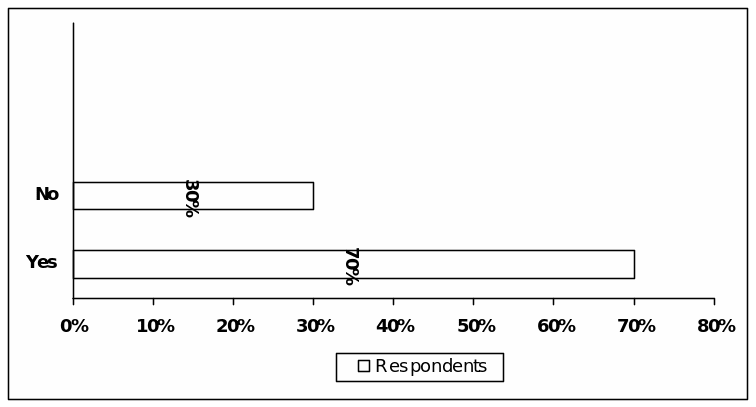
Result: According to the response of the interviewees, it can assume that the Indian food market would develop as most of customers like these foods.
Question 2: Global financial crisis changed the purchasing power of consumer
The aim of this question is to get a clear idea about the consumer market from the position of restaurant employees as they can assess this by considering sales volume. However, it is interesting that food market was not seriously affected for economic downturns though overall profits have declined. According to the survey report, 50% of employees selected strongly agreed with the statement, 10% employees chosen agree, 20% respondents simply disagreed, and 10% strongly disagreed, and 10% employees were disinterested to response.
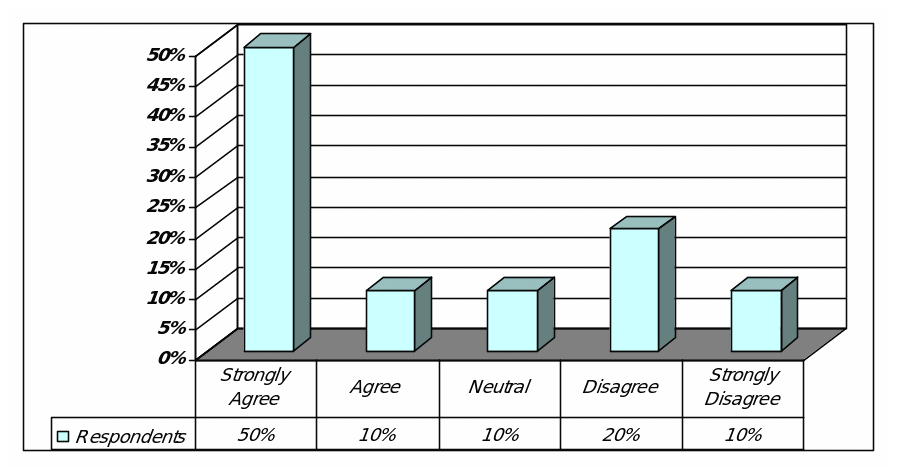
Result: As the purchasing power of customer has decreased, the Indian restaurants should launch new products at lower price with better service.
Question 3: Only NPD can increase annual sales – please mention your opinion
It is true that customers like to taste new foods, but the employees know that only NPD cannot increase sales revenue. However, among 50 employees, 10 customers argued that new product can attract more customers, 30 employees said no, and 10 employees mentioned had no opinion in this issue.

Result: from the fact of this survey, it is clear that the marketer of restaurants should research on their loophole before attempt to launch new products as the employees are not enough confident with customer behaviour.
Question 4: After introduce new product, which one would be more important –
It is important to mention that 40% of total employees (20 respondents) stated that price is the most important factor at this moment. According to the survey report, 20% employees seem it should upgrade service, 10% employees believed that atmosphere is one of the most important issue to develop brand, and 30% respondents that it should concentrate on food quality.

Result: after graphing the employees view, it can say that the marketers of restaurants should more concentrate on market research before launch any product. In addition, Indian ethnic food restaurants should offer lower price than other competitors price in order to sustain in the market in recessionary period.
Question 5: Additional Comments
At this stage, the employees expressed their opinion about the customer buying behaviour on NPD in Indian food. However, the author of this paper has modified the additional remarks of the employees and other executives. After committing research on further clarification, the author included their view on recommendation part of this paper.
Discussion
Competitive Forces Analysis
Threats from new entrants
It is quite difficult for a new business to enter such a highly competitive market with great amounts of investments. Apart from the setting up costs, lack of expertise may also prevent a new entrant to sustain in a market where there are many established ethnic food providers. Besides, the existing firms can instantly participate in the price wars and gain competitive advantage making it hard for the newcomers to continue. However, the diverse potentials of the industry and the presence of high level of demand means that new entrants with great skills could easily penetrate the market and create real threats for the existing firms.
Bargaining power of the buyers
Because of the presence of a wide range of choices, UK buyers have high bargaining power and their switching costs are very low. The emergence of other ethnic food markets has contributed more on lowering the switching costs upholding very low brand loyalty. The buyers’ concentration for judging between different ethnic meals remains on quality of food, swift services, and other features such as lesser charges and superior tastes. However, the Indian ethnic food possesses a distinct style and flavour and so despite low switching costs it remains among one of their favourite meals.
Rivalry among existing competitors
The Indian food industry in the UK faces extreme competitions from Japanese, Mexican, and Chinese food markets; Italian cuisine particularly gains the main attention from the Britons, and thus is one of the main rivals of Indian Food. The alarming issue for which Italian and Chinese food gains competitive advantage over Indian food is that the customers cannot acknowledge foods that are full of calories and spices into their daily diet. Healthier and nutritious options induce them to avoid Indian cuisine making it tougher for the Indian market to expand their businesses. Whilst other ethnic food markets try to bring variation and do more experiments during the NPD, the Indians try to preserve the authenticity; thus, the competitors’ product launches stands to be more profitable than that of the Indians’.
Threats of substitute products
The Chinese, Thai, Japanese, Mexican, and Italian ethnic cuisine providers do not necessarily put forward the products that the Indian ethnic food businesses offers in the UK. The Indian food businesses indeed possess high level of authenticity, distinctness, and complexity that any other competitors cannot easily copy. This means that close substitute products of Indian cuisine are not available in the market. However, other ethnic cuisines possess the quality to compete with Indian cuisine and they certainly impose a great barrier in their profit generating capability by reducing the customer visiting rates at those restaurants.
SWOT Analysis of Indian Ethnic Food in the UK

Strengths
- Indian ethnic cuisine is already quite famous amongst the UK patrons possessing a strong customer base and showing trends of increasing profitability;
- Because of different cultural backgrounds in different areas of South Asia, (including Bangladesh, India, and Pakistan) Indian cuisine has an exceedingly diversified product line entrenching its business in almost every type of foodstuffs; therefore, developing a new product would be quite easier in this market;
- Like the existing products in the market, the new products will also attract an extensive variety of customers irrespective of their age, sex, or ethnic background;
- Owing to the spicy contents of the South Asian foodstuffs, it needs little preservation; therefore, efforts to maintain the new foodstuffs during its R&D would be reduced;
- Most of the Indian foods are usually prepared with numerous kinds of spices, which possess medicinal properties that are beneficial for health, so introducing products with those spices could seize more customer attention in the sector.
Weaknesses
- Customers very often complain of excessive fats, oils, and spices in the foods, which reduces the frequency of regular customer visits at the restaurants lowering the sales; new products that upholds such Indian authenticity could contribute more on this;
- Most of the existing foods are rich in calories, and attempts of lessening it during NPD may lead to poor aroma in the dishes destroying its authenticity;
- Lack of organisational steps to introduce new items and developing them in accordance to the tastes of the Britons have led to boredom among customers towards Indian food.
Opportunities
- Accentuating on health benefits of Indian food (e.g. sauces for antioxidants, chilli for heart’s fitness, vegetables and curries for nutrition) while doing the NPD and promoting those benefits publicly will attract health conscious Britons;
- Developing new products by using less amounts of fatty and spicy substances will increase the frequency of regular customer visits at the restaurants making it a every day choice of people raising the market share;
- Increasing investments for more experimentation during NPD and fusing Indian flavours with European style would contribute to increasing sales.
Threats
- Increasing competition from Japanese, Mexican, and Chinese food stands to be one of the major threats for Indian ethnic food market;
- The dominance of Italian cuisine in British diet is considered a barrier for Indian food market to grow and show its potentiality;
- The impact of global financial crises has already affected significantly in the Indian ethnic food market and it is expected that its continuing impact could contribute drastically in increasing the industry’s costs and lowering the sales figure putting a great strain in its growth, profitability, and sustainability;
- Increasing customer concerns about avoiding foods with high calories and appreciating consumption of nutritious foods have made Thai food a more popular choice amongst the Britons.
Marketing Mix
Product
The Indian ethnic food industry in the UK offers an extremely diversified product line, which includes all sorts of dishes starting from rice, curries, and desserts to appetizers, snacks, soups, and salads. The existing businesses constantly develop new products and include those in their daily menus. The most well known rice based dishes consists of Kasmiri Pulao, Hyderabadi Biryani, Basmati rice, Khichadi, Saffron Pilaf, Shahi Murg Biryani, Vegetable Biryani, Vegetable Pulao etc., which are full of Indian authentic spices. Most of the desserts are rich in calories amongst which Rassgulla, Motichur Ki Ladoo, Jalebi, Kheer, Kulfi, Halva, and Gulab Jamun are popular choices. Apart from that dishes such as Kebabs, Pickles, Tandoori chicken, Bhaaji, Chappati, Chutneys, Mutter Paneer, Pakora, Paratha, Samosas, etc. also uphold the South Asian tastes in the UK.
Price
The price of most of the food items including the old and the new ones are relatively lower than any other ethnic food providers’ ones. This strategy helps to gain a competitive advantage over the competitors and encourages the customers to visit the restaurants more often as they try to avoid Indian food for regular basis. The prices of the items are set by keeping in mind the overall costs that a particular dish has taken to be prepared, the nature and quality of the ingredients used, the aroma, and superiority of the spices, and the net nutritious value of the entire dish. Soon after new product launches, many restaurants offer those items on a discounted price in order to attract more customers and to familiarize them with the new item.
Place
A large number of Indian food stores in the UK are located near busy streets, or in places where schools, offices, universities, and other workplaces tends to be. A store in such populated area means that more students or office goers will be coming to visit the store at the end of a stress-induced day in their institutes or workplaces, thus contributing to increase the sales. Many stores also tend to be in places where the rent of the position is comparatively lower or where the suppliers of the raw materials are nearer. Amongst the famous Indian restaurants in the UK, Tandoori Nights is located in
Bloomsbury, Chutney Mary in Chelsea, Rasoi in Chelsea, Vedas in Bolton, Zouk Tea Bar & Grill in City Centre, and Duet Cuisine in Erdington.
Promotion
The Indian restaurants mainly seek to advertise themselves using the methods that seem more economical, which, for example, includes distributing leaflets, advertising through e-mails, and on the websites that people frequently visit. The Indian cuisine providers offer several promotional packages, such as price reductions during new product launches and many other special offers during festivals like Christmas, New Year, Valentines Day, Eid, and so on. Rasoi, a restaurant in Lincolns Street, London, for instance, offers a free bottle of wine for orders above forty pounds, and free 660 ml Cobra for orders above thirty pounds.
Strategies used by the companies in developing Indian ethnic foods
Key success factors
Following are the key success forces utilized by renowned of Indian food Products Company Tamarind Restaurant and Lounge (Bplans, 2010, p.4).
- Tamarind has easily distinguished from their competitors by three major indicators individuality, pioneering and fashionable dinning atmosphere along with incomparable decoration and design. Consumers have experienced an electrifying dinning environment offered by Zara.
- Superior product quality has offered enormous Indian ethnic foods, elegant service quality, as well as atmosphere;
- Location of the restaurant helps the company to increase its customer base;
- It offers comparatively low price for its food items, for instance, its outstanding lunches are available now £16.5 for two courses;
- Moreover, besides regional specialty all over the world like Indian curries and masala mix, Spanish ceviche, Thai foods, local crab cakes and so on;
- In order to build up committed human resources Tamarind has primarily focused skilled marketers and draw experienced and privileged professionals.
- Focus on cost controlling: Without any exclusion, Tamarind has efficiently controlled their costs at the very beginning and it has an integrated function of Tamarind strategies. It has to be quoted that 80% success of a restaurant would be determined before it has opened.
- Tamarind mostly focused on reducing cost of goods sold in order to increase profit margin, which has the fundamental purpose managing costs of the company.
- However, Tamarind (2010) pointed out that cost factors has included buying, collecting, storage, issue of inventories, rough preparation, preparation for service, portioning, accept of orders, cash receipts, deposit in banks and so on;
- In this ethnic Indian food business, strategy business management has executed by focusing on difference between actual costs and perceived costs. Because of passionate competition, restaurateurs have to aware of enjoying competitive advantages as well as achieving superior business status. Currently, economic downturn, Tamarind has played redevelopment role through innovative look.
Summary of strategy implementation
From starting their business journey Tamarind has followed simple strategy formulation and implementation. Aim of the Tamarind has composed through delivering superior valued as well as widespread foods in an electrifying atmosphere. Tamarind liked to focus on ascertaining a strapping uniqueness in their community through grand opening. They have focused more on marketing rather than increasing consumer volume in the community. Strategic direction of Tamarind has included entire techniques as well as programs in order to defining their goals, mission and vision. Flawless executions of the strategies of Tamarind have kept their superior standards and have utilized the word-of-mouth as key marketing dynamic. Tamarind has whished to establish them as charming as amusing atmosphere along with the supreme qualities at a reasonable price level for their consumers (Bplans, 2010, p.15).
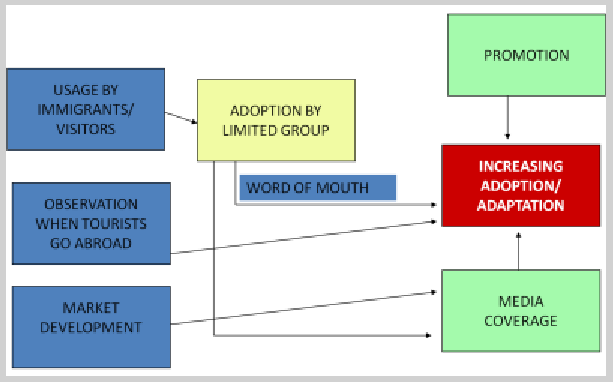
Summery of market analysis
Besides composing business plan through defined prototype, Tamarind has performed research to build concept of Indian ethnic food strategies. Market analysis of Tamarind has driven through following dynamics which have the proficient areas to serve their consumers in abroad (Bplans, 2010, p.11–14).
Selection of segments
Tamarind has surveyed that around 95% has preferred diverse volume segments. The TSOS7 of Tamarind has reported Zara’s Tapas idea has offered diverse volume segments due to their clients have preferred to meet their appetite through option to choose.
Food menu diversity
Indian ethnic restaurants have dramatically boosted in abroad and the major electronic media has advertised to taste spree international foods. During 1999, ethnic restaurants was about 78,000 and in terms of sales volume $30.5 billion. Moreover, Tamarind research has evaluated that multi-ethnic scope of menu selection has rather popular at present. However, key concept of Tamarind menu has represented a variety of food selection scope.
Dining experience at Zara
besides two-core element food and service, for consumer satisfaction, it has equally paid attention on interior designing, lighting, bar, music system and additional factors of consumer satisfaction suggested by their honourable consumers therefore, it would be designed itself as a cosmopolitan restaurant.
Pricing strategies
from 2002–03 restaurant industry has grown and there have no surprising reason for the financial wave in this sector. On behalf of consumer demand, it has priced their menu at the mid-tier stage where no menu would not be exceed over $20 and full service dinning has kept on between $3.50 and $9.50.
Market segmentation
It has intended to accommodate their food products and services towards a wider range of consumer market since they have wished to feel welcome as well as entertain every consumer stayed in their segmentation. Following are the key terms of Zara’s market segmentation.
- High profile business peoples
- Metropolitan couples
- The destination consumers
- High-end single consumers
- Tourists: most of the tourists have 25-45 years old who have preferred to seek fashionable, comfortable, restaurant facilities. Moreover, this segmented consumer has fond of spending in international exclusive restaurants featuring customized products and services as well as taste of new foods.

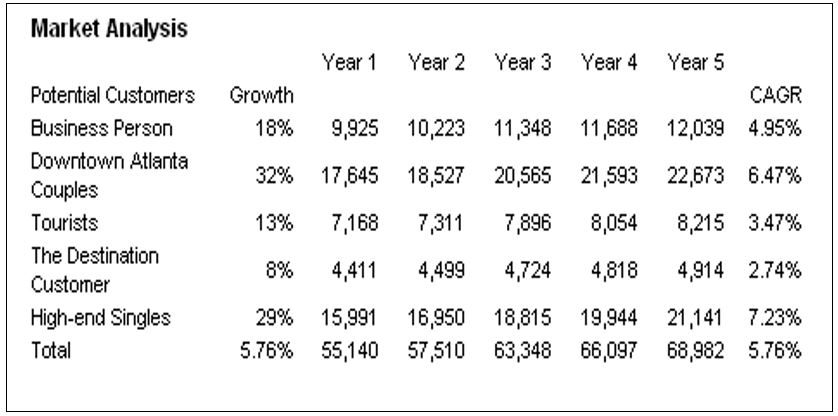
Strategies of the target market segmentation
Following are the key strategies of the target market segmentation (Mintel, 2007, p.14).
- Indian ethnic food bank has grown and flourished through ready meals as well as reproducing cooking appliances.
- Since high penetration of Indian ethnic foods product popularity, Indian products have kept their popularity in their consumer market continuously.
- Inherent flexibility of the Indian foods has capable to penetrate in the restaurant markets as well as in occasions. For example, chicken curries, chicken tikka masala, sauces, snacking.
- Spicy foods of the Indian ethnic food products has kept an unexposed fitness merits. For instance, heart fitness has greatly carried by the vast use of chillies.
- Have great scope to choose Indian foods as every meal of the consumer.
- Market segmentation has discovered through an extensive range of both male and female, young generation, old consumers.
- Most of the Indian foods have required low preservation. Moreover, flavours have the proficiency to get better over time.
- Indian dishes have naturally healthy for the better perception such as rice.
- Few of consumers have a misconception that Indian ethnic foods are full of excessive fat, oil, and spices. For this reason, marketers have taken strategic amendment of changing their image in the growing market.
Market analysis of Indian ethnic foods in UK
With the duration of time Indian ethnic food market has become matured. Following issues have represented matured signs of Indian ethnic food market in the UK (Mintel. 2007, p.2–8).
- In 2006, approximate value of the Indian food sale has touched £493.8 million. Moreover, from the last five years sales value has been comparatively more static that have noticed matured continuation of the Indian ethnic food market.
- Since 2002, ready meal segment has suffered from a significant decline by 7.6%. Additionally, both frozen and chilled have also sacrificed sales volume.
- Simultaneously performance of the cooking appliances has grown over 9.5%.
- From 2002, market leader has become turned into marginal factor the same as the dry foods like breads and snacks have faced elevated value by 19.1%
Stimuli for high demand of the Indian ethnic foods
Following have considered as core dynamics for the consumption frequency of the Indian ethnic foods (Mintel. 2007, Page no. 2–8).
- High level of market penetration as well as scope of wider and popular meal options Indian foods have speedily grown in the UK’s market. Additionally, UK’s consumers have consumed more frequently the Indian foods as a result; Indian meal has become member of their regular meal repertoire. Through this way, UK’s consumer needs and demand have fulfilled widely.
- Over the duration of time, consumers have made trade-off between meal and fitness issues in addition to look for proper nutrition ratio.
- Indian ethnic foods have enriched of natural health values such as sauces have full of anti-oxidant, chillis have proficient to cure heart diseases and vegetables have magically protect from various critical diseases as well as supplied nutritional benefits. Consequently, these merits have attracted and convinced cuisine clients by offering feasible and satisfactory meal daily.
- Advantages of the home cooking return have delivered interesting foodie amusement along with the fitness aspiration.
- Indian cooking appliances have opened the scope to experiment new flavoured dishes along with avaricious taste of ethnic foods.
Significant flexibility of the Indian foods products
At first, there have unambiguous differences between takeaway or home delivery services and the recent every day meal offerings. Premium standard of the Indian foods product has highlighted ingredients qualities more willingly than rationalities and in this way, UK’s consumers have the tremendous opportunity to take Indian ethnic foods. Consequently, lots of consumer support has driven the great success of the Indian ethnic foods. (Mintel. 2007, p. 2–8)
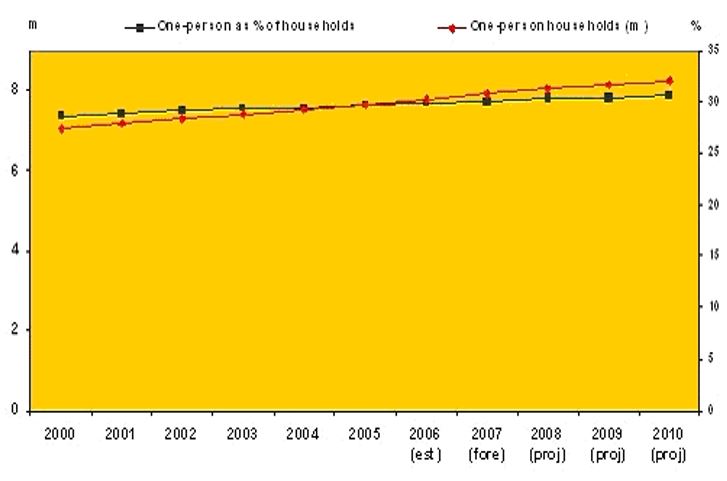
Wider market atmosphere
Within 2011, 43% of the aggregate population of the UK would be transformed their food habit or menu and have a strapping prospect to move forward to the Indian ethnic foods rather than at this instant. Alternatively, single households has become growing by such proportion they would be preferred rather lucrative meal both in occasion and in regular food menu. On the other hand, changing population mix of the UK has generated diverse inhabitants as a result now consumers have moved toward more authentic flavours Indian ethnic foods along with fond of interesting coking appliances (Mintel, 2007, p.2–8).
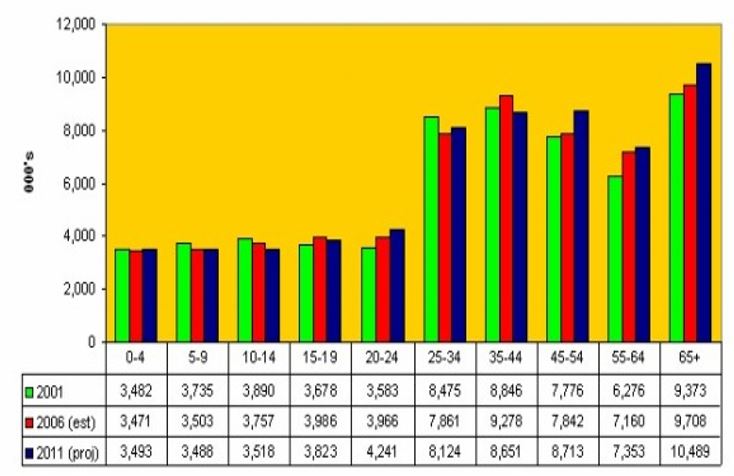
All over the world, India has a widespread consumer market especially in the UK. Following are the assumptions of consumer respond to Indian ethnic foods in the UK. From following discussion, it would be comprehensible that Indian ethnic foods product has become a great part of the British culture and all over the UK Indian curry recipes has preferred as well as enjoyed a lot (Curryfocus, 2007, p. 1).
- Weekly over 2.5 million consumers have served by the Indian curry restaurants in the UK.
- Local and regional consumers of the UK have greatly fond of tasty chicken curry as well as chicken tikka masala. A survey report has appraised that in the UK, these two dishes have regularly placed as top recipe all over the year.
- Above 9,000 Indian curry restaurants have operated in the UK where more than 70,000 employees have worked. Moreover, London has the most preferred place of Indian curry restaurants and in terms of quantity those have exceed Bombay and Delhi as a whole altogether.
- However, popular cuisine of this country would be faced a great uncertainty without Indian foods product. More specifically, as said by a survey, Indian restaurant has earned 42% or in terms of valuation £250 million of their aggregate sales by retailing ethnic foods annually.
- It has to be quoted that, compare to Indian local and regional restaurant in Britain they have used the term curry more broadly in terms of multiple curry style dishes those have featured with both local and regional personality.
- Nottingham Trent University has surveyed that UK’s people have eagerly wait for Indian curries because of taste stimulating spices buds.
- Rationally, to each Chinese restaurant, there have two Indian curry restaurants offering Indian ethnic foods products.
- Every year, people of this country have spent £3.2 billion to eat Indian ethnic foods. More specifically, UK’s people have taken two third meals of Indian ethnic foods amongst their aggregate meals.
To what extent NPD of Indian food would fulfil the needs of customers
Usually, trend of the consumers in developing counties like India NPD of the Indian ethnic foods has too difficult to predict as well as understand their psychology. Moreover, common consumer either has played irrationally or choose food item randomly. Conversely, complication of the consumer food needs and demand has flowed through a large volume of food menu and in contrast, increases of NPD dynamics, difficulties, and heterogeneity have performed. View point of complexity, it has a widely acceptable analysis to seek valuable competitive advantages for both of the consumer demand fulfilment and Indian ethnic food marketers. Three major attributes have driven the consumers’ Indian ethnic food choices. The forces have included marketer’s food pricing strategies, health and hygiene quality, and most significantly consumer’s income level. Consumer’s perception about food quality attributes has diverse into four categories those have also considered the degree of determining consumers’ needs and demand for the newly produced Indian ethnic foods. A brief discussion of these attributes has explained below (Grunert, 2003, p.3).
Sensory quality
Common features of the Indian ethnic foods has twisted through terrific spicy masala taste, appearance along with aroma has the prevailing surface. Taste of Indian food has experienced such quality, which could be evaluated whenever a consumer would be purchased it. Conversely, consumers of a specific market like Indian ethnic foods has treated as host to assessed market signals such as brand position, pricing strategies, parameter of the quality in order to forecasting the taste experience of the Indian foods.
Health and hygiene aspects
Over the last 50 years consumer food choice has significantly focused on health and hygiene issues. At present, researchers of food quality have assumed that consumer’s view to food quality has equally weighted sensory, health and hygiene issues though these two aspects has composed through diverse attributes. Whenever, consumers studied that there have a significant trade-off between eating and health, they would not be liked to enjoy sick experiences. Conceptually, few diseases have reflected through poor food habits. Potentiality of health diseases reduction would be reached at satisfactory level if food values have full of proper nutrition, omega-3, sound fat ratios, minerals, protein, vitamins and so on the same as the Indian ethnic foods have. Consequently, food choice attributes have been defined as the communication tools of health concern that has interpreted a set of health signals. Indian ethnic foods have kept enriched fitness messages via a variety of cook and uncooked foods as well as fruits and vegetables. However, in few cases, value of the Indian foods has created conflict among the consumer’s own hypothesis of the food values. Moreover, these hypotheses have defined diversely from each other and stated that industrial foods have enriched of craftsmanship rather than healthiness but most of them argued that unnecessary fat or cholesterol would be harmful for health but vegetables have carried high food values. In case of Indian ethnic foods, chefs have enough concern on proactive health attributes that have developed through functional foods manufacturing in order to deliver positive health benefits. Additionally, several health needs and demand have not yet delivered, has stimulated public debate as well as greatly impact on consumer’s food habit and the individual hypothesis of the consumer.
Processing attributes
Though there have no sensible influence on the absolute foods product, but the consumer has great concentration on food product processing approaches. Consumers of the Indian ethnic foods product have willingly wished to pay high for elegant appearance and aroma. Indian food consumers in the UK have increasingly fond of the prominent food processing of the Indian ethnic foods. Thus, number of Indian food consumers in the UK has elevated speedily and they have persuaded efficient food processing ways of the Indian.
Convenience power
From the past few decades, new Indian foods in the UK have earned tremendous popularity. Hypothetically, convenience power has stated the efficiency of foods product, which has surrounded by proper food values along with the capability to save individual households time and energy while taking meals. In a broader sense, convenience power has affiliated with the replacement of home meals that might be alternate food habit. Brand new researchers have defined that convenience power would be worked best where it has efficiently overcome individual consumer’s resource limitations as well as appetite. The following bar diagram has carried a survey outcome of the needs and demand for new Indian foods product in the UK. In this survey result, aforementioned four degrees have examined with the change of time as with the individual consumer’s fitness hypothesis for the Indian ethnic foods.
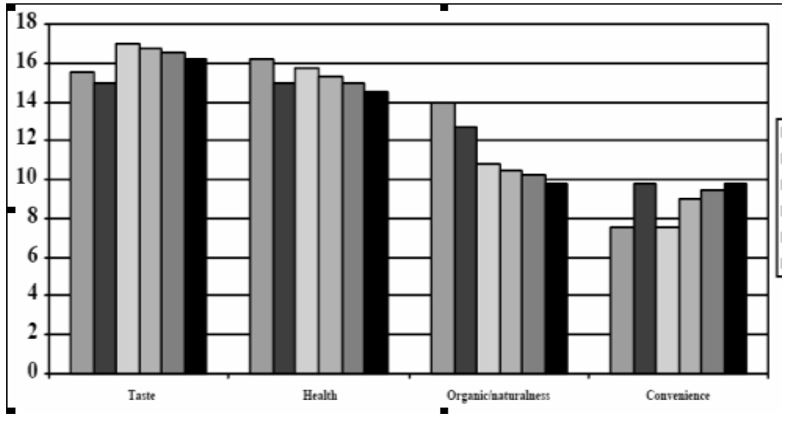
Efficient stimuli to buy new Indian foods
Typically, three cores stimuli has driven consumer’s positive buying behaviour and they have included respectively as individual or personal trade-offs, diverse cultural influence and various consumer segments. Though these three have become more complicated the same as the consumer’s purchasing buying behaviour, but accumulation of these three quality attributes has greatly impact on consumer’s positive buying behaviour. Personal or individual trade-offs has communicated the experiences which would be treated by the consumer’s stimuli to purchase foods surfaced through four qualities though consumer has well known that someway there have potentiality to escape any of the four attributes. For instance, high fat quality of a product has superior taste, but injurious for health. However, convenience power and the organic response to buy Indian new foods product have driven through the atmosphere of prevailing purchasing stimuli via diverse modes along with diverse cultural circumstances (Grunert, 2003, p.5).
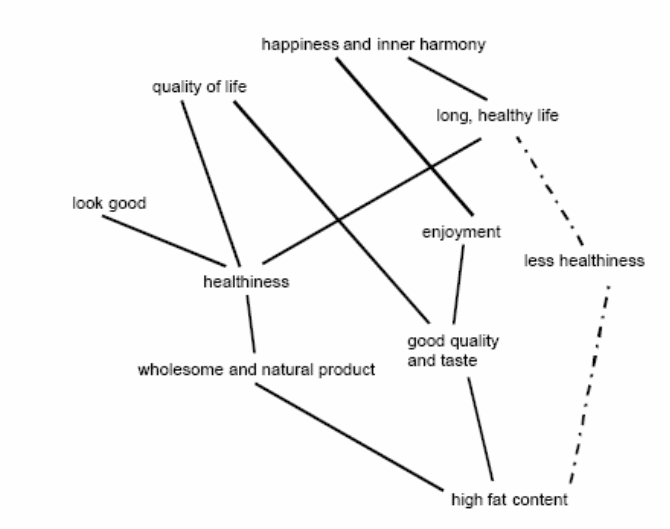
Conclusion
Recommendations
The Indian ethnic food market has reached maturity in the UK market, but this sector is not fully free from problems in terms of customer behaviour and competitors. In this context, the researcher suggest few actions to develop the market of Indian ethnic food in the UK market
- Indian ethnic food has a high penetration, but it is essential to increase the consumption frequency to develop market growth;
- To develop this sector, it should require more upgraded and controlled distribution channels;
- In addition, it should require mega and specialized importers to ensure quality management over raw materials and the frozen food network;
- The marketer of Indian ethnic food products should emphasis on the health benefits of Indian food in the advertisement of their business;
- Kotler & Keller (2006) stated that brand awareness is one of the key issues to achieve success in any industry. They also added that newborn company could hardly gain brand awareness in a saturated market, so, the possible entrants should enter into the industry through purchasing existing firms. This process will facilitate the entrants to gain immediate brand awareness and will help to work efficiently with crucial suppliers, which assist the company to develop Indian ethnic food in the UK market;
- The marketers should invent their products anchored in market research, identifying what consumers demand. This investigation processes should carry out through field research (in this case researcher used questionnaires) and desk research (the investigation process based on existing information in the market).
- In addition, it is essential to differentiate the products targeting different market segments, for instance, kids, adults, couples, health conscious, ethnic food lovers etc.
- Before innovating new products, the existing Indian restaurants should create an employee oriented job environment, as the industry is a labour driven industry, they can influence the customers.
- Most of the large ethnic food firms seem that the ongoing product differentiation should continue for further advancement in this market;
- Existing Indian ethnic restaurants should try to increase the level of capital and technological investments by overseas mega ventures;
- Most of the restaurants do not interested to invest money for conducting formal and extensive marketing research about customer buying behaviour. As a result, the restaurants should invest more energy, money, and time for such purpose;
- In addition, they should recruit different national and international consultants and agents to participate in market research activities in order to introduce new product in the UK market. However, it would be difficult for small restaurant to do so, but they can make participation with professional agents who can estimate the real market needs or customer behaviour;
- Indian restaurants should attend the UK based trade shows, competition programme, and exhibitions for analyzing the industry behaviour to the customers;
- The marketer of Indian restaurants should properly utilize its experience by identifying the problems and removing these obstacles by implementing proper strategies;
- Restaurants should build team of employees with strong interpersonal skills to deal with the customers, as they feel very happy to talk with a person of great interpersonal skills and abilities;
- Besides Indian restaurants, the UK retail sales of Indian foods like ready meals. These retailers can establish a counter for introducing or promoting their offers, normally visit and meet with other core industry contacts.
- It should remove socio- cultural problems to expand the market outside of the large city;
- In order to change the behaviour of the customers, it should not use preservative or chemicals to keep the food fresh;
- Because of global economic meltdown, the purchasing power of the UK and Indian buyers have decreased dramatically, so, it should decrease the price of existing products as well as new food items to attract more customers;
- Forceful marketing efforts should deliver in arranging more TV advertisement by using push strategy in terms of product benefits and tastes;
- The rising health consciousness among the community leads to the demand for nutritious foods, so Indian restaurant can reshuffle the menus by introducing dishes that are prepared from organic foods, without artificial flavour or colour;
- Furthermore, proper management of restaurant is also essential to gain vertical integration, more sales growth, and efficient distribution system.
- They should integrate IT properly to control the company because the managerial tasks of every food centre need to be automated and internet- oriented., so, they can integrate IT to introduce online purchasing system or booking system;
- Along with existing promotional tools, both larger and smaller Indian ethnic restaurants should arrange more promotional programs, like- in-pack premiums as one free meal with one purchase, free or gift option, raffle draws, contest and sweepstakes etc.
- From the results of primary data, it is clear that restaurants should improve food quality, introduction of original Indian taste, develop atmosphere, and increase services.
Conclusion
Indian ethnic food industry remains an attractive investment sector with a steady growth rate of 4.5% though the ready meal segment faced a 7.6% decline in sales since 2002 (Mintel, 2007). Non-white population in the UK has strengthened the foundation of the industry. The innovation and development of new products has been a driver of competitive advantage. As the core component of this industry is the growing consumer demand and awareness for having a tasty and easy dining choice, it is becoming over saturation stage. The competitive rivalries in the market are very high due to the presence of many Chinese restaurants though it is difficult for a new company to enter into the market for high exit barriers, consumer preferences, brand loyalty, regulations, or high operating costs. On the other hand, the intimidation of substitute product is high due to the nature of product categories.
This feature has also enhanced the overall competitive structures, which are also yielding some situational constraints and consumer benefits at the same time. From customer perspective, different Indian ethnic restaurants are getting more innovative to deliver diversified food, service, and authentic quality to the target consumers. In addition, they are also expanding consumer choice criteria by presenting different items at lower price. However, the major problem of NPD is negative customer perception about the quality of Indian food regarding health, quality, and services. Those problems can be resolved by taking adequate measures and following suggestions of this dissertation.
References
Anon (2007) New Product Development. Web.
Beta (2010) New Product Development Processes Beta. Web.
Brassington, F. (2010) New Product Development (NPD). Web.
Crow, K. (1996) A Strategic approach to product and process development. Web.
Curryfocus (2007) Chicken Curry and Beyond -The Curry Focus Blog Reviews of the Delicious Curry Focus Recipes. Web.
Engel, J. F., Blackwell, R.D., Miniard, P.W. (1996) Consumer bahavior. 8th ed. USA: Dryden Press.
Grunert, G. (2003) Trends in consumer food choice. Web.
Hart, S. (2010) New product development. Web.
Hitt, M. A., Ireland, R. D., & Hoskisson, R. E. (2001) Strategic Management. 4th ed. South-Western Thomson Learning.
Keegan, W., Moriarty, S. & Duncan, T. (1992) Marketing. London: Prentice-Hall.
Keller, K. L. (2009) Strategic Brand Management- Building, Measuring and Managing Brand Equity. 3rd ed. New Delhi: Prentice Hall of India.
Khana (2010) Indian Ethnic Foods, Khana- Indian Recipes, Ingredients, and Indian Food Guide. Web.
Kotler (2010) Consumer Markets and Consumer Buyer Behavior. Web.
Kotler et al. (2004) Consumer buying behaviour. Web.
Kotler, P. & Keller, K. L. (2006) Marketing management. 12th ed. New Jersey: Pearson Prentice Hall.
Kumar, P. S. & Senthil et al. (2009) Optimization of Lean New Product Development process using Advanced Dual Stage Performance Phase method. Web.
Lingham, L. (2009) Human Resources: Marketing, consumer behaviour models. Web.
Malhotra, N. K. (2009) Marketing Research- An Applied Orientation. 5th ed. Prentice-Hall of India Private Limited.
Marshall, C. & Rossman, G., (1999) Designing qualitative research. 3rd ed. Thousand Oaks – CA: Sage.
Mintel (2007) Indian Foods – UK – January 2007. Web.
PDI (2010) Stage-Gate-Your Roadmap for New Product Development. Web.
Perner, L. (2008) International Food Markets. Web.
Saunders, M., Thornhill, A. & Lewis., P. (2006) Research Methods for Business Students. 4th ed. London: FT Prentice Hall.
Sekaran, U. (2006) Research Method for Business. 4th ed. John Wiley & Sons, Inc.
Skinner, S. J., & Ivancevich, J. M. (2003) Business for the 21st Century. Boston: Homewood.
Tamarind (2010) Company Overview of Tamarind restaurant. Web.
TechTarget. (2005) Product development. Web.
Wharton (2009) Made For India: Foreign brands adapt to Indian tastes and preferences. Web.
Yin, R. K. (2003) Case Study Research: Design and Methods. 3rd ed. Beverly Hills, CA: Sage.
Zikmund, W. M. (2006) Business Research Methods. 7th ed. Orlando: Harcourt Publishers.
Appendix 1
Questionnaire
Section A: (About the respondents)

Section B: (design to know customer’s view)

Section C: (design to know employees’ view)
